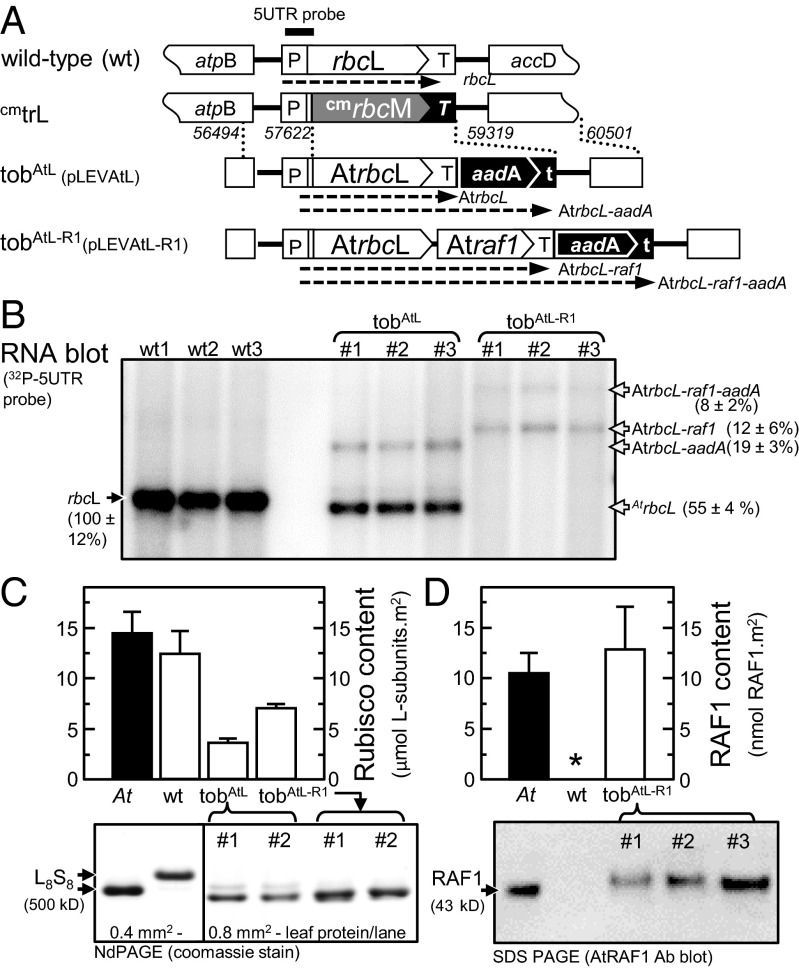Fig. 2.
Transplastomic tobacco generation and analysis of Rubisco and AtRAF1 expression. (A) The transforming plasmids pLEVAtL (GenBank accession no. KP635965) and pLEVAtL-R1 (GenBank accession no. KP635964) contain homologous plastome flanking sequence [indicated by dashed lines; numbering indicates region of sequence integration relative to Nicotinana tabacum (wild-type) plastome sequence; GenBank accession no. Z00444] that directed integration of the AtrbcL or AtrbcL-raf1 transgenes and a promoterless aadA selectable marker gene into the cmtrL tobacco genotype plastome (23) to produce lines tobAtL and tobAtL-R1. The tobacco rbcL promoter/5′ UTR (P) and first 42 nucleotides of wild-type rbcL sequence are conserved in each tobacco genotype. This sequence corresponds to the 5′ UTR probe (14) with the expected mRNA species identified by the probe shown (dashed arrows). t, rps16 3′ UTR, T, psbA 3′ UTR, T, rbcL 3′UTR. (B) Detection of the various rbcL coding mRNA transcripts by the 5′ UTR probe in total RNA from 6 mm2 of young, nearly fully expanded leaves (14–16 cm in diameter) from comparable positions in the canopy of 32 ± 4-cm-tall plants of independent T1-transformed lines and three wild-type controls. (C) Variation in the mean (±SD) Rubisco content in tobacco leaves analyzed in B and those from three Arabidopsis (At) leaves as quantified by 14C-CABP binding. Shown is an example ndPAGE analysis of the leaf protein used to confirm the varied levels of L8S8 Rubisco. (D) AtRAF1 production in the At, wild-type, and tobAtL-R1 leaf protein analyzed in C was quantified by SDS PAGE immunoblot analysis (example shown) against known amounts of purified AtRAF1 (Fig. S3). The asterisk (*) represents the AtRAF1antibody does not recognize tobacco RAF1.

